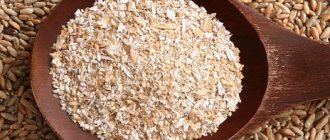About 20 years ago, we first heard about low-fat foods. In the struggle for a slim figure, many began to give up fat. To this day, you can find low-fat products in our stores. They also have fans, but is it worth giving up fat?
Should I give up fatty foods?
Of course, we cannot give up fats in our diet; fats are vital for the existence of our body. Complete refusal, on the contrary, will do great harm, because fats save a person from depression, from atherosclerosis, and, surprisingly, from obesity.
When purchasing any dairy products, pay attention to the packaging; if you find a state mark on it, this is an argument in favor of the product. Proven technologies were used for its preparation. The most in demand is, of course, milk. It can be sterilized or pasteurized. The first one does not spoil for six months, and an open package can be stored in the refrigerator for 2-3 days. The shelf life of pasteurized milk is short, only 36 hours. Another popular product is cottage cheese, it is better if it does not contain preservatives and general additives. Fat content can vary from 0 to 23%.
Consumption of dairy products
3% cottage cheese is the correct ratio for people who want to lose weight. That is, low-fat it is not useful. For those who still want to avoid a large amount of fat in their diet, saturated fat first of all. It is recommended to consume cottage cheese up to 5%. If a person does not lose weight, then you can absolutely safely consume cottage cheese up to 9%, and this will be useful, it will provide all the benefits that we expect from it.
Indeed, in every refrigerator there are fermented milk products. It is recommended that absolutely everyone not buy a product with 0% fat. Very often, the manufacturer adds, for example, salt to cottage cheese. Salt will retain water and can lead to swelling. Then he adds some additives, stabilizers, all kinds of flavorings, starch, sometimes sugar, what is called fruit and berries, something that is not natural. As a result, it increases the calorie content, if you compare the calorie content of such products, it will be exactly the same as, for example, if you take cottage cheese 3%, 5% 9%, if you mix it correctly with vegetables with proper fiber. At the same time, are you immediately depriving yourself of what? Calcium will never be absorbed without fat; you deprive yourself of all fat-soluble vitamins that cannot be absorbed without fat. A, D, E, K, which play a huge role in our body.
Every day, all nutrients—proteins, fats, carbohydrates, fiber, and water—should enter our body. Firstly, a fifth of our brain consists of cholesterol, and secondly, cholesterol is responsible for ensuring that our cells communicate harmoniously with each other and work efficiently. Impulses will not be transmitted, and information will not be transmitted. Next are the membranes of all cells, our skin, female and male sex hormones, our hair. Indeed, in order to not have too much saturated fat, because excessive amounts are harmful to us, we can take a product of 3%, 5%, 9%, if we are reducing weight then up to 5%.
What is the difference in calories between milk with 1% fat and 3.6% fat?
When products are degreased, of course, the product loses all its taste. The difference is the following, 1% milk is 42 kcal per 100 g of product. 3.6% is 62 kcal, the difference is not significant, but it is recommended to drink milk better than 3%.
Is it true that low-fat foods help you lose weight?
Due to the fact that they do not make you feel full, you are guaranteed to eat much more low-fat foods. Therefore, this is not true, and moreover, you cannot deprive yourself of fat, saturated fat must be present. A person needs 30 grams of fat per day when he is losing weight, maximum for men 40 grams of fat, and at the stage of life 50-60, but 80 grams is the limit. Be fat, because you need to live tasty and healthy! The main thing is that there is moderation in everything.
The goal is perfect health
The idea of using low-fat dairy products came to American scientists in the last century. Then a direct relationship was established between a high fat diet and the development of cardiovascular diseases.
This event made significant adjustments to the diet of ordinary citizens and contributed to the creation of a huge industry for the production of low-fat dairy products. Today, the ability to get rid of fat in cottage cheese or milk has reached unprecedented heights, but society is faced with a new problem.
Regular consumption of low-fat foods leads to serious metabolic disorders.
Disappointing research results show that future generations will fall victim to this low-fat diet. This is clearly illustrated by American society, where up to 50% of the entire population of the country faces the problem of impaired metabolism. Moreover, not only adults, but also children are susceptible to such diseases.
Of course, morbid obesity cannot be blamed solely on low-fat dairy products. However, they significantly contribute to disrupting the process of fat accumulation in the body.
Lactic acid diet: who should not
What to consider: kefir and fermented milk products with a distinct sour taste contain lactic acid. These products are not suitable for high stomach acidity. Therefore, for gastritis and ulcerative conditions against a background of increased pH, less acidic yogurt and fermented baked milk are used.
As for cottage cheese, it is indicated for any diseases with varying stomach acidity. It has no sour taste and consists of 20% protein, being a record holder among protein products. Meat also contains 15-20% protein. At the same time, meat protein is more difficult to digest than plant protein.
In pursuit of taste
Initially, the idea of reducing fat content had good intentions and made life easier for people suffering from diseases of the cardiovascular system and diabetes
. All that was necessary was to separate the milk. But the final result did not give the desired result.
The fat content did decrease, but the taste suffered. Which was unthinkable in a situation of general interest in a new and “healthy” diet.
- Having lost fat, the product became bland and inexpressive.
- The pleasant aroma disappeared.
- The consistency became uneven.
- The shelf life was significantly reduced.
But demand creates supply, and a solution was found in the form of various food additives and stabilizers
. They made it possible to preserve and sometimes improve the presentation and taste of low-fat products.
Natural and beneficial fats for the body began to be replaced:
- Refined sugar or its substitute.
- Starch.
- Stabilizers.
- Preservatives.
- Flavorings
.
Regular salt in increased quantities helps solve the taste problem in low-fat cheese.
This can become a serious health problem, since the daily salt requirement for an adult is only 5g. In cheese according to the classic recipe, 100g of product can contain from 1.5 to 3.5g, and in low-fat cheeses this value can be increased. These additives themselves cannot cause damage to the body, but their presence increases the amount of fast carbohydrates
. Which leads to weight gain, water retention in the body and other consequences.
So why, when choosing between dairy products with 9% and 0% fat, will the majority still prefer the second option?
What do dairy products belong to? Dairy products
Fermented milk products (lactic acid products) are a group of dairy products produced from whole cow's milk, milk of sheep, goats, mares and other animals or its derivatives (cream, skim milk and whey) by fermentation. The main technological feature of the production of fermented milk products is fermentation by introducing into it cultures of lactic acid bacteria or yeast (samokvas or sourdough). Often, before the production of fermented milk products, preliminary pasteurization or boiling of milk is used to eliminate the possibility of development of the vital activity of harmful microorganisms contained in it.
Fermented milk products are divided into:
In the first, bacteria break down milk sugar to form lactic acid, under the influence of which milk casein coagulates (precipitates in the form of flakes), resulting in significantly increased digestibility compared to milk.
In mixed fermentation products, along with lactic acid, alcohol, carbon dioxide, and volatile acids are formed from milk sugar, which also increase the digestibility of the product. In terms of protein and fat content, fermented milk products are almost no different from whole milk.
Fermented milk products are also often enriched with various probiotic cultures. The most famous example is bifidocus, which differs from kefir by the addition of bifidobacteria.
The illusion of the right choice
The reason for the popularity of low-fat products lies in their availability and deceptive simplicity.
There is no need to spend time creating a balanced diet, taking into account calorie content and the ratio of proteins, fats and carbohydrates. After all, a ready-made solution is already waiting for us on store shelves. Low-fat kefir gives a false sense of control
. After all, nothing terrible happened and one serving of the drink is unlikely to affect your figure. However, it has been proven that this line of thinking often leads to the opposite effect. So much so that daily calorie content increases by an average of 250 kcal. This is facilitated by inner peace and the illusion of making the right choice, which often leads to an increase in portions.
Cottage cheese is an ideal product
Not only is almost all milk sugar lost during the production of cottage cheese, it also concentrates a huge amount of high-quality milk protein - the most important component of our food. There is much more protein in cottage cheese than in any drinking fermented milk products. At the same time, it also contains beneficial lactobacilli.
Article on the topic
Cottage cheese is simple. 3 ordinary light dishes from it and a quick Easter
Cottage cheese is very filling and perfectly helps build muscle. To get the same amount of protein as is contained in just 100 grams of 9% cottage cheese, you need to drink 600 ml of milk. But with it you will get twice as much fat plus 6 tablespoons of milk sugar.
There are fewer of them than in yogurt or other fermented milk, but you shouldn’t discount them. But there is 1.5 times more useful calcium in cottage cheese than in them or in milk, and almost 2.5 times more phosphorus.
In addition, cottage cheese contains quite a lot of phospholipids. These substances are important for the body - they prevent the harmful effects of cholesterol.
Pyotr Obraztsov, Candidate of Chemical Sciences:
— Many people believe that cream does not form on the surface of modern milk, and foam does not form when boiled, because it is powdered. This is not entirely true. Cream is formed on the surface only of milk that has not undergone so-called homogenization.
This milk contains fat globules, which, being lighter than water, float and stick together - this is how cream is obtained on the surface of the milk. All that remains is to remove them. And if you boil such milk, then foam is baked on its surface. With modern milk this does not work, because it is homogenized. This means that immediately after milking the cow, it is specially whipped to destroy the fat globules. As a result, tiny particles of milk fat are formed, which do not float, but form a suspension - a suspension in the milk. This is done so that the milk does not separate (that is, does not form cream), which is necessary for its industrial processing.
Article on the topic
Powdered milk and palm curd. How to distinguish a natural product from a fake
Obvious harm
It is difficult to overestimate the impact of low-fat foods.
And if the diet is not balanced, this can lead to serious consequences. After all, fats are an irreplaceable “building material” that helps maintain immunity at the cellular level. The first thing the body faces when it switches to a low-fat diet is a lack of these same fats.
. This situation disrupts the natural course of events. The body begins to actively accumulate incoming lipids, which leads to fat deposits that are forced from a health point of view.
After all, fats are not only a source of calories, but also a valuable material necessary for brain function, stability of the hormonal system, etc. As a result, excess weight, problems with metabolism and subsequent disorders of the endocrine system.
Hunger is another important aspect. Low-fat foods do not cope with their main task and make you feel hungry more than usual.
. This problem is especially relevant for strict and unbalanced diets.
Lack of saturation and the illusion of zero fat content leads a person to unwanted overeating. Of course, counting calories can prevent this, but it doesn't make you feel any less hungry.
Fats are replaced by carbohydrates
. This is especially true for yoghurts and other sweet dairy products. Without sugar, they would be tasteless and unlikely to gain universal acceptance. Therefore, to create optimal consistency and taste, modified starch, sugar and other carbohydrates are added to the composition, which do not contribute to the health and beauty of the figure.
In addition, we must not forget about various food additives and flavor enhancers.
It has been established that a decrease in healthy fats also leads to a decline in psychological health. Thus, lovers of 1% fat content in dairy products are more prone to depression and increased irritability.
How to choose “your” fermented milk product
Fermented milk products are one of the most popular and, importantly, affordable products for a healthy diet. The stores sell yoghurt, kefir, yogurt, acidophilus, and products with the prefixes “bio” and “bifido.” We understand all this diversity and choose the ideal product for our needs together with the head of the laboratory of sanitary food microbiology and microecology of the Institute of Nutrition of the Russian Academy of Medical Sciences, Doctor of Medical Sciences Svetlana Anatolyevna Sheveleva.
Traditional and Probiotic Products
All fermented milk products can be divided into traditional and probiotic.
Traditional are the usual kefir, fermented baked milk, yogurt, matsoni and other dairy products known since ancient times.
Probiotic e - products artificially enriched with bifidobacteria and lactobacilli. More often than not, their names begin with the prefixes “bio”, “bifi” or “bifido”.
Usually, one type of bifidobacteria or lactobacilli is added to probiotic fermented milk products, but now new products are appearing that contain a whole complex - they are considered the most effective.
The term “probiotics” comes from two words – pro and bio, which mean “for life.”
What both groups of products have in common is that both contain many living microorganisms that are safe for humans (bifidobacteria and lactobacilli), with the help of which these products were manufactured.
Functions of lactobacilli and bifidobacteria
Bifidobacteria and lactobacilli are very important for the body and perform several important functions.
The main task is to create an acidic environment that is not tolerated by harmful microbes - putrefactive bacteria that can form in the intestines, and pathogenic microorganisms that enter the human digestive tract with water and food. This prevents intoxication of the body and reduces the load on the liver - after all, it is this organ that removes toxins.
In addition, bifidobacteria and lactobacilli help the body absorb vitamins and microelements.
IT IS IMPORTANT TO KNOW
Disturbance of intestinal microflora is called dysbiosis. This is not a disease, but a condition fraught with the development of diseases. Dysbacteriosis is caused by environmental factors, stress, chronic fatigue, antibiotic treatment, and improper diet (rarely, but often).
Which product is better?
All fermented milk products are useful, but the degree of usefulness of a particular product is individual for each person - it depends on his state of health and the functionality of the digestive system.
Healthy and active people can consume any fermented milk products they like. To keep the intestines in good shape, it is enough for such a person to drink a glass of regular kefir or fermented baked milk every day, including if you prefer bio-yogurt, drink it without fear, it is useful for both healthy people and citizens with gastrointestinal problems.
With mild dysbacteriosis, you already need products with the prefix “bio” and “bifido” - they contain more bifidobacteria and lactobacilli, which means their beneficial properties are more pronounced. They normalize the composition and functions of intestinal microflora, promote the absorption of minerals, and stimulate the immune system.
The choice of your fermented milk product also depends on age and concomitant diseases.
In case of increased stomach acidity, acidophilus and other products obtained using acidophilus bacilli are contraindicated.
To feed children, you should also choose low-acid foods with flavoring additives that make sour kefir or yogurt tastier.
IT IS IMPORTANT TO KNOW
Berry and fruit additives, especially those from exotic fruits, can cause allergies in children
For increased body weight and obesity, low-fat or low-fat foods are useful, as well as without fruit additives - they contain carbohydrates.
Older people should also choose low-fat foods, preferably fortified ones - after 60 years, the body produces few enzymes, and the digestive system needs additional help.
If you are intolerant to milk, replace it with yogurt with lactobacilli casei: they accelerate the dynamics of the intestines, making the product easier to digest.
IT IS IMPORTANT TO KNOW
Refusal of dairy products due to their intolerance is dangerous for teeth and bones - in this case, the body does not receive enough calcium, and this is a building material.
If you have serious complaints about eating disorders, do not expect to be “cured” with bio-yogurt: fortified products are intended for mass consumption and are not a medicine. Be sure to consult a doctor who will prescribe treatment.
We have devoted a separate article to the valuable properties of fermented milk products and advice on how to properly store and use them so that they bring maximum benefit .
ATTENTION
In order to ensure the safety of products on the shelves of Russian stores, Rospotrebnadzor carries out systematic work on a daily basis to identify various types of goods that do not meet mandatory requirements. Data on these goods is entered into the State Information Resource in the Field of Consumer Rights Protection (GIR ZPP).
Only for the period from November 28, 2019 to December 5, 2019, information about 58 batches of identified products that were in circulation in violation of established requirements in 7 constituent entities of the Russian Federation was entered into the State Register of ZPP.
As a result of control measures carried out by Rospotrebnadzor over food and non-food products, cases of sale of various types of unsafe products are identified - fish, culinary products, milk and dairy products , vegetables, toys, etc.
At the same time, goods are sold with violation of expiration dates, lack of information about the manufacturer, and lack of declarations of product conformity with the requirements of technical regulations of the Customs Union. For example, in many constituent entities of the Russian Federation, meat and meat products, canned food, milk and dairy products , etc.
Of these, 47 batches of food products ( milk and dairy products - 7 batches ; melons - 3 batches; confectionery products - 6 batches; canned food - 1 batch; culinary products - 1 batch; flour and cereal products - 2 batches; meat and meat products - 3 batches; vegetables – 5 batches; fruits and berries – 4 batches; poultry, eggs and their products – 2 batches; fish, non-fish species and products made from them – 9 batches; bakery products – 1 batch, others – 4 batches party.).
On the pages of the GIR ZPP you can familiarize yourself in detail with current information on the facts of detection of products that do not meet mandatory requirements.
The section “Products that do not comply with mandatory requirements ” contains information about facts of violation of the requirements of technical regulations in relation to products, including the name of the product, date of production, manufacturer, indicators of non-compliance and the region in which the specified product was identified.
Rospotrebnadzor continues to ensure control over products in circulation on the territory of the Russian Federation.
Harm of sweetener
Another problem with many low-fat dairy products is the sugar substitute.
It would seem that its presence solves one of the problems associated with high carbohydrate and calorie content. But here, too, everything is rather ambiguous. If a person has eaten, albeit low-fat, but high-calorie yogurt with refined sugar, the endocrine system receives a command to process incoming carbohydrates
. The sweetener disrupts this process, and the “deceived” body tries to catch up.
This leads to increased appetite and cravings for simple carbohydrates. This in itself does not contribute to weight gain, but this condition significantly worsens the overall quality of life and makes you obsess over the feeling of hunger.
What applies to dairy products? Types of dairy products
A dairy product is made from milk and/or its constituents without the addition of fat or non-dairy protein. The product may contain components necessary for milk processing. The following types of dairy products are distinguished.
Products obtained by milk separation
These include cream, butter and whey.
Cream is milk fat separated from the bulk of milk. Butter - obtained by whipping cream, so the composition does not differ from them. Cream is fat dissolved in liquid, while butter is liquid in fat. Therefore, the oil has a harder and denser consistency. Whey is the product remaining after the curdling and straining of milk. It is used to make cheeses and in some dishes.
The main feature of these products is that no chemical reactions occur during their preparation. Therefore, they retain the properties of milk.
Dairy products
Fermented milk products are obtained by processing milk sugar by various lactic acid bacteria. These products are easier for many people to digest than whole milk. Fermented milk products include kefir, yogurt, fermented baked milk, yogurt, ayran, kumiss, cottage cheese, cheese, sour cream.
Products obtained by heat treatment of milk
This is ice cream, pasteurized and baked milk.
Products of concentrated milk, which are obtained by separating water from it
This is condensed and powdered milk.
Cheeses, in turn, are divided into:
- hard;
- soft, characterized by a delicate consistency and oiliness;
- pickled, having a specific salty taste;
- processed, obtained by processing natural cheeses.
Benefits of low-fat dairy products
Despite all the controversial issues in the use of this category of products, there are several positive aspects.
Low-fat yoghurts, kefir and milk can indeed be lower in calories than regular ones.
This is especially useful when following strict diets, when every percentage of fat and carbohydrates counts. This statement can only be applied to natural products with the appropriate composition. A small percentage of fat does not increase the level of “bad” cholesterol, which is valuable in the prevention of cardiovascular diseases. However, this does not exclude the disorders described above, which can lead to obesity and new problems.
Low-fat dairy products will be useful for people suffering from hypertension and as a prevention of atherosclerosis
.
Powdered skim milk alleviates gastritis with high acidity, heartburn and other diseases of the digestive system
. Thanks to its gentle effect on the walls of the stomach, relieving inflammation and irritation of the mucous membranes. It will be useful for some kidney pathologies, acting as a diuretic and at the same time restoring the body’s vitamin and mineral reserves.
However, in case of pancreatitis in the acute phase, gastritis with low acidity and the presence of kidney stones, powdered milk should not be consumed!
In other cases, the constant use of such products is not advisable. Since low-fat foods do not provide the necessary saturation of the body with nutrients.
As an example, can low-fat cottage cheese be used instead of a product with regular fat content? This product is famous for its protein, phosphorus, calcium, etc. content.
So, per 100g of cottage cheese there is about 95mg of calcium, the absorption of which will require approximately 9.5mg of fat
. This, in turn, meets the characteristics of cottage cheese with 9% fat content. It is not advisable to consume cottage cheese below 5%, since the resulting calcium simply cannot be absorbed in the body.
The final decision about whether to introduce low-fat dairy products is made by everyone independently. But, as you know, the best solution is moderation in everything
. And if the consumption of low-fat dairy products is dictated by medical necessity, then you should treat this with maximum responsibility, carefully monitoring the vitamin and mineral balance and nutritional balance.
Low-fat fermented milk products list. How to choose low-fat foods
You carefully monitor your diet so as not to gain extra pounds. Buy yogurts, kefir, ice cream, cottage cheese, cookies and other products with a low fat content or no fat at all.
But in fact, its small amount or complete absence in no way indicates a low calorie level. Such food does not help control weight at all; it is just as high in calories as regular food. And the fact that the package says “no fat” is perceived by many as a “green light” and often overeating torments them. Therefore, in order to stay in shape and not gain excess weight, we need to choose the right low-fat foods.
Why are low-fat foods harmful?
Such elements of your diet taste good and give an excellent boost of energy. But low-fat foods lack fiber, proteins, minerals and vitamins. In addition, in order to preserve taste while removing fats, sucrose and starch are added to them. This way the food loses fat and gains more carbohydrates.
What is the right thing to do in this situation? If you are overweight or have high blood cholesterol levels, you should limit the amount of fat in your menu. You can eat foods low in fat or without this harmful substance:
- low-fat cheese,
- skim milk,
- light mayonnaise,
- salad dressing.
But don't get too carried away with such substitutes. Initially, you should eliminate really fatty foods from your diet:
- lamb,
- beef,
- meat snacks,
- cheeses,
- whole milk,
- potato chips,
- ice cream.
Next, you need to start changing the cooking method itself. Replace frying in oil with grilling, boiling in water or steaming. It is also extremely important to eat natural foods. The less processed it is, the healthier, more nutritious it is and contains less sugar and fat.
Learn to read labels correctly! Most often, manufacturers use a trick in which the packaging indicates the amount of fat in one unit of the product (for example, in one cookie). People who want to lose weight or stay in shape, having seen magical numbers, as if under hypnosis, do not see the true indicators and proper nutrition becomes the way of their life.
Therefore, to avoid such a situation, you should know:
- In a low-fat product, fat is no more than half a gram per unit, and a product with a low percentage of fat content or no fat at all - 3 g or less. “Light” products have 25% less fat than regular ones;
- the total carbohydrate content (sucrose, starch) is indicative;
- be able to distinguish between the weight of the package and the weight in relation to which the amount of fat is indicated.










